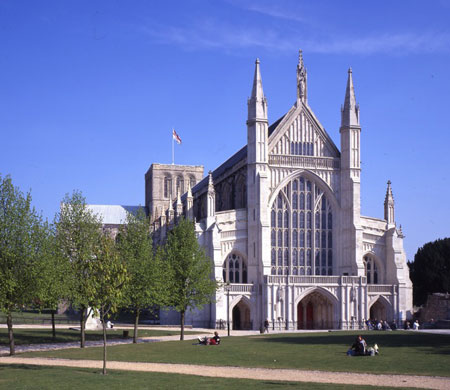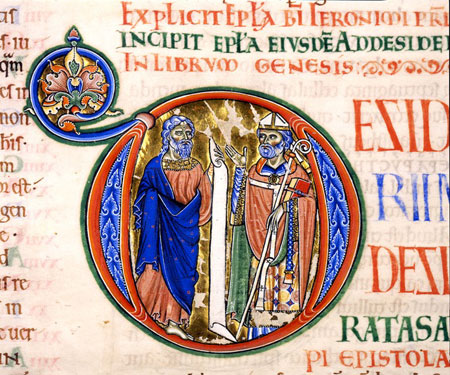Winchester Cathedral to offer calligraphy workshops
For over a thousand years, people have come to seek inspiration in the magnificent Winchester Cathedral. Today, we welcome 300,000 visitors a year to share our worship, explore our heritage and attend our many events. But what is unique about it is that, apart from other attractions, the Cathedral holds workshops on Christian monastic calligraphy.
 Winchester Cathedral
Winchester CathedralCalligraphy and illumination
How letters are shaped, coloured, decorated and arranged has a huge influence on how they are read. Scribes developed calligraphy, the ancient art of beautiful writing, long before print existed. Today, in our modern era of visual communications, it’s a skill that’s ever more relevant.
What are calligraphy and illumination?
The term calligraphy comes from the Greek words for beautiful (kalos) and writing or drawing (graphos). It means creating well-made letters and shapes by hand, normally with special pens or quills, paints and ink, and arranging them beautifully.
The term illumination comes from a Latin word (illuminare), meaning to ‘light up’. It describes the process of making the pages of a book glow with bright colours and gilding, applied with special pens and brushes.
Traditionally both these processes are manual; the scribe or illustrator works directly on the fine, smooth surface of parchment or good-quality paper.
Today, many graphic designers work with computers to produce similar effects. Just think of the number of fonts on a computer, and the different kinds of lettering, shapes and colours we see around us every day on packaging, advertising and websites.
Western culture has many great examples of hand-written and illustrated manuscripts produced by its great monastic houses, which were important centres of learning and literacy.
These include the Winchester Bible, the largest and finest of all surviving 12th-century English bibles, produced by the monks of the great Priory of St Swithun. You can see it in the Cathedral Library today. The Doomsday Book of 1086, William the Conqueror’s great inventory of land and assets across his new kingdom, was written by a single scribe attached to his court in Winchester, then England’s royal capital. Beautiful writing also forms an important part of the Chinese and Japanese artistic traditions.
The Cathedral still has a team of up to 20 modern-day volunteer scribes, the largest of its kind in any English cathedral today.
They work from a Scribes’ Desk based in the Cathedral, producing original work ranging from prayer cards to a while-you-wait calligraphy service for items such as bookmarks.
Workshops start with teaching the ‘foundation’ round hand, and are open to people of all ages and levels of experience.
 The Winchester Bible, the largest and finest of all surviving 12th-century English bibles
The Winchester Bible, the largest and finest of all surviving 12th-century English biblesSource:
Calligraphy is the art of both ideal writing and an ideal soul.



